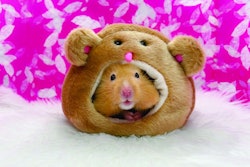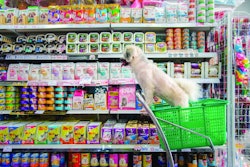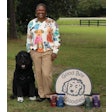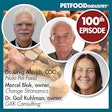
As pet ownership has increased in the past few years, smaller animals have become the beneficiaries of changing economic attitudes toward pets. While dogs and cats still make up the majority of pet-owning households, growth in desire for smaller, more portable pets has resulted in a boost for animals like birds, small mammals (such as hamsters and rabbits), reptiles and fish.
According to the American Pet Products Association (APPA)’s 2021–2022 National Pet Owners Survey, 8% of U.S. households (5.7 million homes) have pet birds, and almost 50% of new bird owners said the pandemic was a factor in their acquiring their feathered companion. Bird owners are also likely to have multiples; according to the survey, the average number of birds per bird-owning household is 2.46.
Nutrition key to pet bird owners
As with other pet ownership segments, more than half (59%) of bird owners said they spent more money on their animals in the previous 12 months, according to APPA’s survey. During the pandemic, people have undeniably spent more time at home with their pets, increasing the bond between human and animal, and leading to upticks in spending on everything from daily food to treats and even gifts (according to the survey, 80% of bird owners said they buy presents for their birds).
“The bird space is growing in the independent channel precisely because the store owners focus on the birds and educating their owners,” said Mary Wyld, owner of Wyld’s Wingdom, a U.S.-based wholesale pet bird supplies distributor. “It is a personal relationship that is the strength of the independents, and the birds win. Trends of toys and accessories will continue to grow as bird owners learn and respond to the fact that birds are like little children and have many of the same needs: good foods for healthy bodies and great stimulating toys for their innate inquisitive nature, and the inborn need to forage.”
Part of that education has included an increased focus in bird nutrition. One-fifth of bird owner respondents to the APPA survey said their pets are on a special diet, and supplementation is a significant focus of pet bird nutrition, even as more bird owners switch from seed-based diets to more formulated pellets.
“The trend we see is the continual increase in parrot owners switching to formulated foods (pellets and the like) from seed-based diets,” said Wyld. “Within that category, organic foods are also growing. These trends speak to the increased knowledge of the owners and their willingness to go to the extra expense for good bird nutrition. Additionally, our supplement business is strong for those owners who are not going strictly pellets to strengthen the nutrition of the seeds and natural fruits and vegetables they are feeding.”
Economic challenges affecting the pet bird space
Supply chain issues and inflation have hit the pet bird market, both on the food side and the availability of bird types.
“First, we are seeing a slight move to value,” said Tim Norsen, vice president of sales, pet specialty, for Vitakraft Sunseed, a U.S.-based pet food and treat manufacturer. “This happens whenever we have big ripples in the economy and translates to share gains in less expensive formulas and larger pack sizes. Second, we are seeing declines in treat sales. This is also typical of the economic climate as consumer spending tightens and impulse purchases decline. Third, we are seeing that foods for smaller species continue to grow. Parakeets, Conures and other small parrots have all grown in ownership due to availability and that has driven those categories forward. The availability of Cockatiels continues to be an issue which has weakened this normally robust segment.”

A focus on natural formulations is driving the bird food category forward, with bird owners claiming a high rate of brand loyalty once they find the right food for their pet. | Courtesy Vitakraft Sunseed
Cockatiels are very popular birds to own due to several factors, including their smaller size, quieter demeanor and social temperaments, according to Dr. Laurie Hess, DVM, Diplomate ABVP, with the Veterinary Center for Birds & Exotics, who spoke with PetMD (“All about Cockatiels,” www.petmd.com) about the brightly colored animals. In fact, they come in just behind parakeets (which more than 25% of bird owners have as pets, according to APPA survey data) in terms of popular bird types to own.
Bird owners are apparently very brand loyal, wanting to stick with the products they know their pets enjoy, which means experts in the space are predicting economic issues to be short-lived.
“Bird owners are highly loyal to brands and specific types of diets,” said Norsen. “Supply chain disruptions caused many popular items to struggle with availability [in 2021]. Now, that supply chain is more predictable and retailers are maintaining stock across the department, which is helping to drive traffic back to stores. I think we will see a shift back to premium as the economy improves and the shock of inflation and price increases wear off. The thing that’s most encouraging is that the bird category has remained remarkably stable through 2022 when other categories saw a decline.”
The future of the pet bird space
Pet birds are social, busy creatures, making innovation a key component to the pet bird segment’s growth.
“I think we will see increased innovation compared with the past two years, which is especially important in the treat and toy space,” said Norsen. “Innovations in diets are much slower due to the high level of research and testing coupled with rigid consumer buying habits. For years, this category has embraced natural, and there are few products on the market with outdated formulas or ingredients. As with small animal, I think we will see more share gains in foraging style mixes which drive diversity and mental stimulation.”
More pet bird statistics
- Two-thirds of bird owners are Gen Z or millennials, with millennials accounting for 45% of owners.
- The top benefits of bird ownership, according to bird owners: They’re fun to own; they provide love, companionship, company and affection; they relieve stress.
- Roughly one-fourth of U.S. bird owners purchase their bird food from their veterinarians.
- Bird owners are a an active group on social media: BEAK (the Bird Enjoyment and Advantage Koalition)'s initiative MyRightBird has 240,000+ active members on Facebook.
Source: APPA 2021–2022 National Pet Owners Survey
New bio-appropriate bird, small pet foods mimic wild mix

















